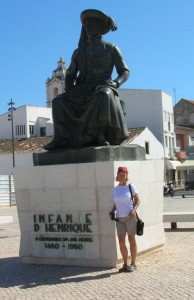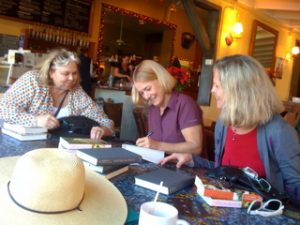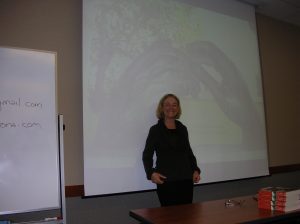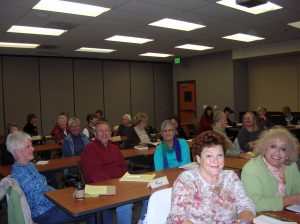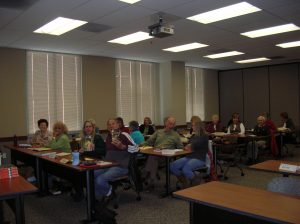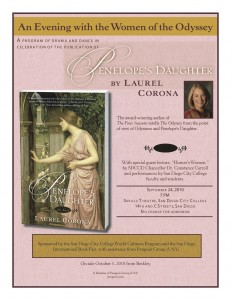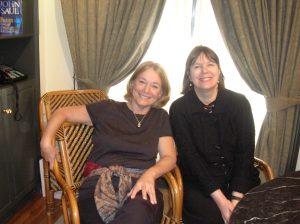
I’ve written before about how endless finishing a novel is. We breath a sigh of relief when we finish the first draft, but experienced authors know the work is far from done. I call this the 60 Percent Rule, because probably not half, but close to it, of the total amount of time a book requires to make it into the reader’s hands lies ahead.
With my current novel, THE SHAPE OF THE WORLD, I must have called it finished a dozen times, only to go back through and discover more to be done before it winged through cyberspace to my agent’s desktop. That’s a biggie, because that’s when I truly have declared it done to the best of my ability.
Wrong. Here’s sort of how the conversation went:
Meg Ruley (Agent): I read this in bits and pieces, some on my Nook and some in hard copy, so I couldn’t tell the word count but it seemed to read a bit long. How many words is it?
Me: 199,000.
Meg: Did your grandmother ever use the expression “drop your drawers?” because that’s what I just did.
Oh Lordy, Lordy, here I am telling this amazing story in the full way I want, and I’m creating an unmarketable monster. Mind you, Meg says this is one of the most compelling novels she’s ever read, but the problem is no editor will read it. She can’t even ask at that length. The longer the book, the higher the production cost, and the greater the risk of not making money. Even if an editor thought it was the novel of the decade, it would be an almost impossible pitch to make to the editorial board.
It’s my fault for not checking in with Meg when I saw THE SHAPE OF THE WORLD sprawling way past the length of my other novels, but I told myself that multigenerational stories in epic times are special cases, and there are readers who made Michener and others household words because they like long reads. But a great story, compelling characters, strong writing, and an interesting historical era are not enough in these chaotic times. Publishers don’t seem to know what to do with any book they acquire in an era rendered triply difficult by falling sales, changing demographics, and the rising popularity of e-books. They simply weren’t going to take a chance on mine.
Idea One: Maybe it could just be an e-book for a while, see how it does. It doesn’t matter how long an e-book is, really, in terms of cost. Then, once it’s clear there’s an audience, it’s put out in hard or soft cover.
Bad plan. Books need to be on tables in bookstores. They need to be passed from hand to hand. They need to be signed at appearances. Even though e-books have an expanding share of the market and are obviously going to continue to grow, for authors they are a side show, not the main event.
Idea Two: How about two parts, each a very manageable (and quite trim) 100,000 pages?
Bad Plan. First, it would require substantial rewriting, because each book would have to stand on its own. Writers talk about the arc of the story a lot, how the action is paced and conflicts arise and are resolved. I would have to go back in and make a second set of arcs, keeping the big one, but changing enough to make each part satisfying on its own. Quite frankly, I couldn’t see how.
Idea Three (barely considered): Stick the manuscript on the shelf and mourn that such a great story won’t ever see the light of day.
No, non, nyet, lo, nein. This book is the product of my heart, a story I burned to tell. It’s about the last generations of Jewish presence in Iberia before the expulsion by Ferdinand and Isabella in 1492. People must know more about the Sephardic Jews and their fate, and I appointed myself to the task. It’s bigger than me. Throwing up my hands and grousing about publishing realities abandons people (both historical and fictional) that I am not prepared to write off. Plus, I’ve gotten a lot of help on this book, and I want the people who contributed their time and effort to see a result.
Meg: I think what we have here is a rose garden in serious need of pruning.
Me: How much? 10 percent? That would bring it down to 180,000.
Meg: I think we’re talking more like 160,000 max, and even that’s going to be tough to pitch.
Twenty percent! Horror, panic, pain. That’s 60 words a page, 120 pages total out of the book. I can’t do it. I can’t do it. I can’t do it.
Meg: This book needs a crash diet, basically.
Me (drawing on everything I possess): Well, I guess I have to try.
Fortunately I was born with the happy gene. I am the eternal optimist. I am “can-do” on steroids. I spent a day or two thinking about how to proceed. First I eliminated several sections of the story I thought were historically interesting but not really pulling their weight plot-wise. Then I dug into a first revision, discovering some endemic wordiness in my writing style that I am really grateful to have noticed. I’m afraid to go back to my first three novels now for fear I’ll see the same things there. I eliminated what Susan Vreeland calls “research dumps,” interesting historical tidbits that aren’t well integrated into the narrative. Historical novelists just have to accept that we know many things we can’t tell the reader.
I pared it down to the targeted 160,000 words and told Meg I was going to go back one more time to make sure I hadn’t introduced any choppiness into the manuscript. Wow! Not only did the book read just as well or better than before, but I kept finding more things I didn’t really need, paring an adjective here, a conversation tag there, a bit of dialogue here, a scene there. Kind of like the second pass on a closet cleaning, when you’ve really got the “throw it away if you don’t use it” mentality going on. I’m on target now to give Meg a version next week that is only a little longer than FINDING EMILIE, with a word count somewhere around 145,000–still a little high but no longer a jaw dropper.
I’m amazed I can sound so nonchalant about deleting 25 percent of my book, but business is business. I don’t think about the hours–actually months–of time I spent on work that is now gone with the press of the delete key. Writers have to accept such losses if they want to be published.
I learned from my first book, UNTIL OUR LAST BREATH (which also need a massive pruning for different reasons) how to let writing go if it doesn’t serve the goal of sharing my work with the reading public. Even writing we really love, writing we are proud of. Even some of our best. We let our emotions have their moment, we mourn, and then we go on to write some more.

